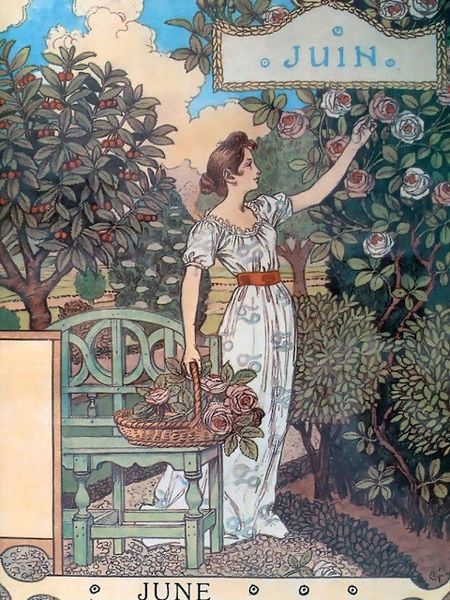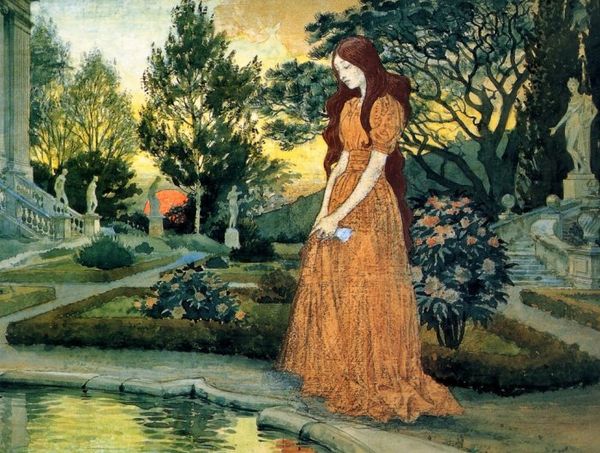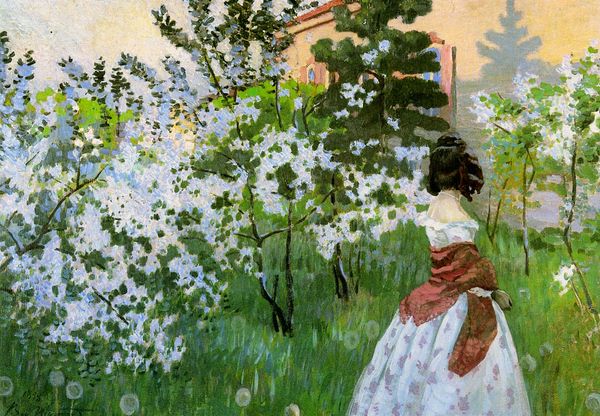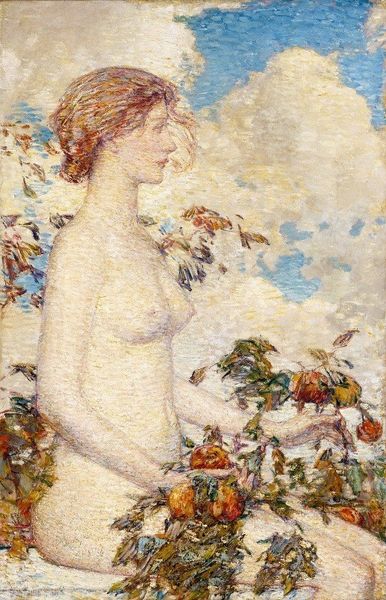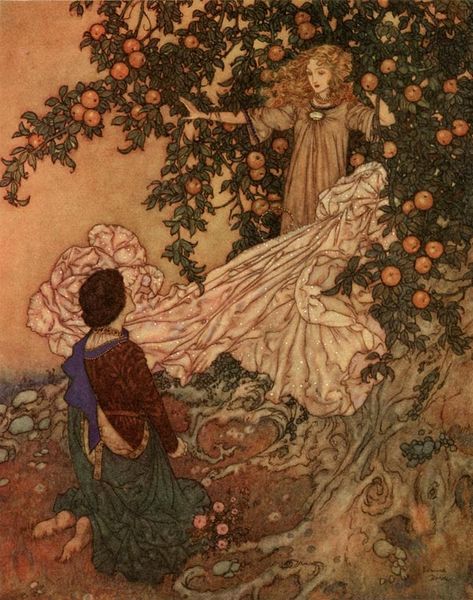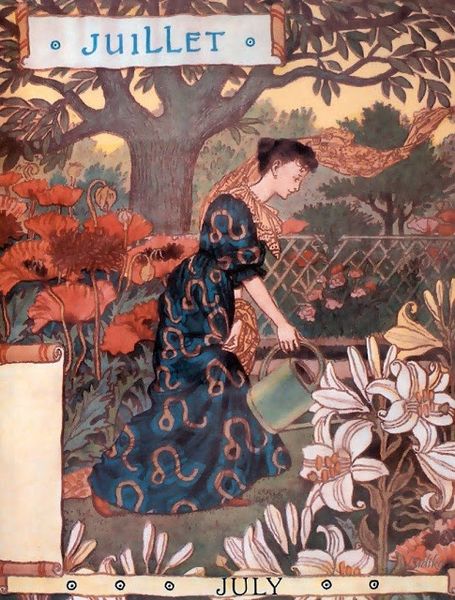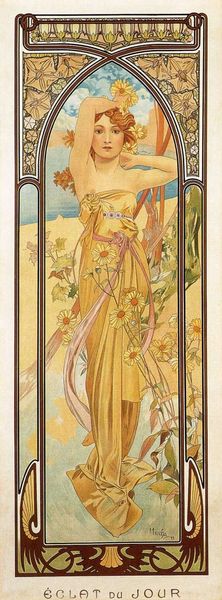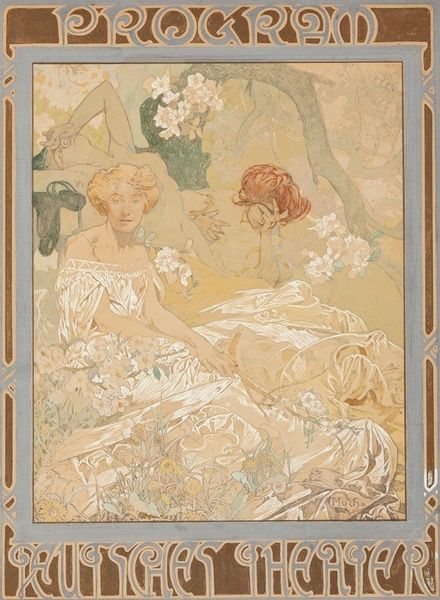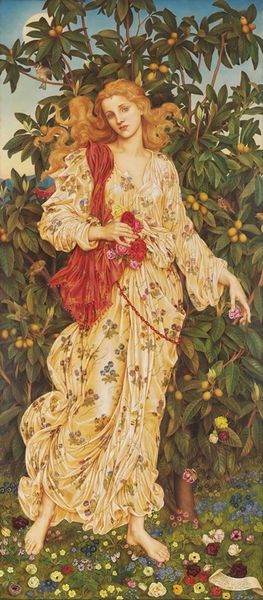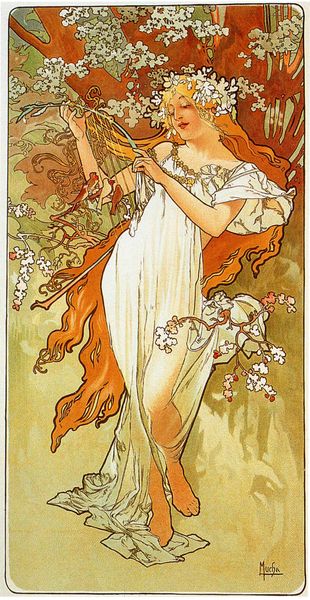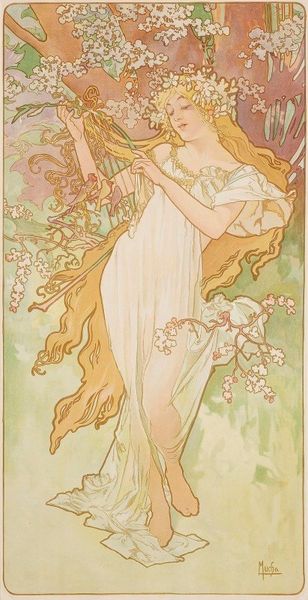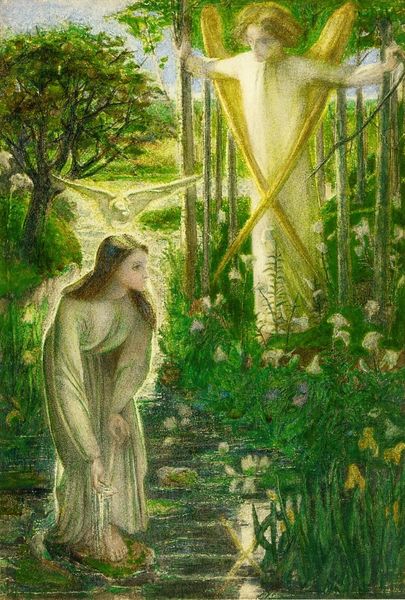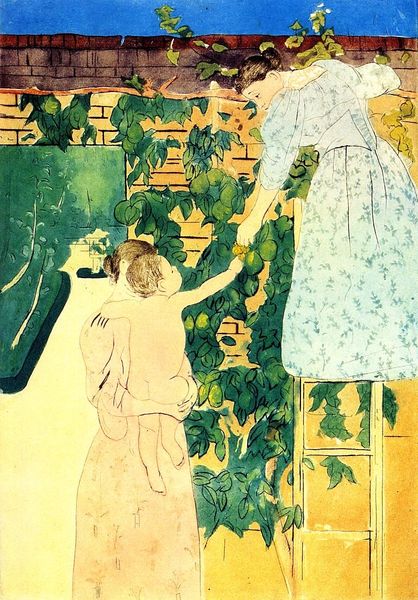
painting, watercolor
#
portrait
#
tree
#
art-nouveau
#
painting
#
landscape
#
folk art
#
watercolor
#
plant
#
painting art
#
mixed media
#
watercolor
Copyright: Public domain
Editor: Here we have Eugène Grasset’s “La Belle Jardiniere – April,” created around 1896, likely a watercolor or mixed media painting. There’s such a calm, idealized feeling about it. What strikes you when you look at it? Curator: The artwork invites an exploration of form through its elegant lines and delicate composition. Consider how Grasset utilizes line to define both the figure and the surrounding flora, achieving a sense of rhythm and balance. The patterns on the woman’s dress and the stylized rendering of the blossoms offer a dialogue between naturalism and artifice. Have you considered the contrast between these elements? Editor: I see it, yes, how the blossoms are more abstracted compared to the figure. How does the overall composition guide the viewer's eye? Curator: Observe how the verticality of the trees is echoed in the woman's posture, leading the eye upwards, only to be met by the horizontal script proclaiming "Avril". The delicate coloration, too, works to unite these disparate elements. The chromatic harmonies contribute to a serene, unified whole, with the pale yellows and greens dominating the canvas. How does this limited palette affect your perception of depth and space? Editor: It flattens it, almost like a tapestry. Curator: Precisely. This suppression of traditional perspective contributes to the artwork’s distinct two-dimensionality and reinforces the decorative quality inherent in Art Nouveau. Editor: It’s interesting how focusing on form and composition opens up entirely new ways of understanding the artwork beyond just its surface representation. Curator: Indeed, a formalist reading compels us to appreciate the intricate dance between line, color, and shape. This allows for a deeper appreciation of the artwork’s underlying structure.
Comments
No comments
Be the first to comment and join the conversation on the ultimate creative platform.
